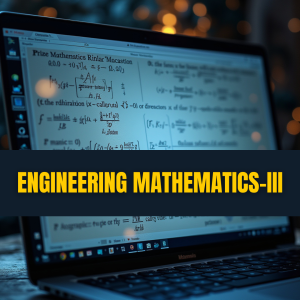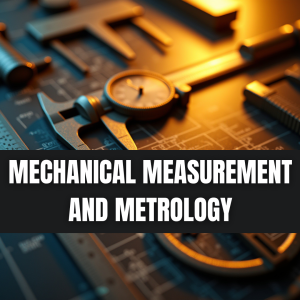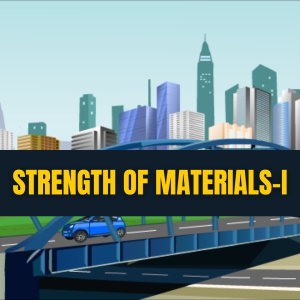Applied Thermodynamics-II
13.98$
About the course
Applied Thermodynamics-II deals with the detailed study of Air Compressors such as Reciprocating, Rotary and Dynamic Air Compressors, including their Constructional and Thermodynamic Study. The subject then deals with one specific application of Air Compressors, i.e. Gas Turbines. It explains the Thermodynamic Aspects of Gas Turbines and their Derivatives. Also, the subject provides a brief description of different Jet Propulsion methods.
What will you learn?
The complete online syllabus of this course comprises 8 Learning Modules | 152 Topics of Learning | 6.5 Hours of Learning | 28 Assessments
Module
- Basics of Air Compressor
- Reciprocating Air Compressors
- Rotary Compressors and Thermodynamics of Dynamic Air Compressors
- Centrifugal Air Compressors
- Axial Air Compressors
- Open Gas Turbine Cycle and its Derivatives
- Various Types of Gas Turbine Cycles
- Jet Propulsion
Topics of Learning
- Types of Thermodynamic Process
- P-dV Work in V=C, P=C & T=C Process
- P-dV Work in Adiabatic Process
- P-dV Work in Polytropic Process (1)
- P-dV Work in Polytropic Process (2)
- Slope of Isothermal & Adiabatic Process on P-V diagram
- Introduction to Air Compressors
- Applications of Air Compressors
- Classification of Air Compressors
- Graphical Representation of Compression Process
- Various Losses in the Compression Process
- Uncooled Compression
- Various Efficiencies and their Representation
- Introduction to Reciprocating Air Compressor
- Working of Single Stage Reciprocating Compressor
- Equation of Work (Neglecting Clearance)
- Best Value of Index of Compression
- Clearance Volume
- Equation of Work (With Clearance Volume)
- Heat Losses during Compression
- Free Air Delivery
- Volumetric Efficiency
- Factors Affecting Volumetric Efficiency
- Actual PV Diagram for Single Stage Compressor
- Introduction to MultiStage Compression
- Working of Multi-Stage Reciprocating Compressor
- Advantages and Disadvantages of MultiStage Compressor
- Work Input for Two-Stage Compressor
- Minimum Work Input Required
- Work Input for Multi-Stage Compressor
- Heat Rejected to Intercoolers
- Actual PV Diagram for Multi-Stage Compressor
- Efficiency of Compressor
- Ways to Increase Isothermal Efficiency
- Effect of Speed and Atmospheric Condition on Compressor
- Capacity Control Of Compressors at Variable Speed
- Capacity Control Of Compressors at Constant Speed
- Factors Affecting Compressor Performance
- Performance Curves of Reciprocating Compressor
- Introduction to Rotary Compressors
- Roots Blower
- Efficiency of Roots Blower
- Vane Type Blower
- Efficiency of Vane Type Blower
- Lysholm Compressor
- Rotary vs Reciprocating Compressor
- Introduction to Dynamic Rotary Compressors
- Basics of SFEE
- SFEE Applied to Rotary Compressors
- Static and Total Head Values
- Graphical Representation of Compression Process
- Representing Work on PV and TS Diagrams
- Various Losses in the Compression Process
- Uncooled and Cooled Compression
- Various Efficiencies and their Representation
- Representing Flow Process on TS Diagram
- Velocity Diagram of Centrifugal Compressor
- Work Done by Impeller
- Power Required for Ideal Impeller
- Width of Blades of Impeller and Diffuser
- Isentropic Efficiency of the Compressor
- Slip Factor, Power Input Factor and Pressure Coefficient
- Diffuser and its Efficiency
- Surging and Choking
- Turbine Blades vs Compressor Blades
- Work Done Factor
- Dimensionless Parameters of Axial Flow Compressor
- Flow Passages and Vortex Theory
- Coefficient of Lift and Coefficient of Drag
- Losses in Axial Flow Compressor
- Comparison between Centrifugal and Axial Flow Compressor
- Introduction to Gas Turbine
- Classification of Gas Turbines
- Open Cycle Gas Turbine
- Actual Open Cycle Gas Turbine
- Cycle Air Rate and Work Ratio
- Maximizing Specific Output
- Maximizing Cycle Thermal Efficiency
- Open Cycle Gas Turbine with Intercooling
- Efficiency of Actual OCGT with Intercooling
- Open Cycle Gas Turbine with Reheating
- Efficiency of Actual OCGT with Reheating
- Open Cycle Gas Turbine with Regeneration
- Efficiency of Actual OCGT with Regeneration
- Open Cycle Gas Turbine with Intercooling, Reheat and Regeneration
- Efficiency of Actual OCGT with Intercooling, Reheat and Regeneration
- Effect of Operating Variable on Thermal Efficiency
- Dual Turbine System
- Series and Parallel arrangement of Gas Turbine Power Plant
- Combustion Chamber for Gas Turbine
- Closed Cycle Gas Turbine
- Closed Cycle Gas Turbine with Intercooling
- Closed Cycle Gas Turbine with Reheating
- Constant Volume Gas Turbine Cycle
- Semi-Closed Cycle Gas Turbine
- Open Cycle vs Closed Cycle Gas Turbine
- Gas Turbine vs Steam Turbine
- Gas Turbine Materials
- Gas Turbine Fuels
- Cooling of Turbine Blades
- Introduction to Jet Propulsion
- Classification of Propulsion System
- Working of Turbojet Engine
- Advantage and Disadvantages of Turbojet Engine
- Thrust Augmentation
- Thermodynamic Analysis of Turbojet Engine
- Equations of Thrust and Efficiency of Turbojet Engine
- Turboprop Engine
- Advantage and Disadvantages of Turboprop Engine
- Turbojet vs Turboprop Engine
- Turbofan Engine
- Ramjet EngineRocket Propellant and its Types
- Thermodynamic Analysis of Rocket
For a quick review, please watch our videos here 




